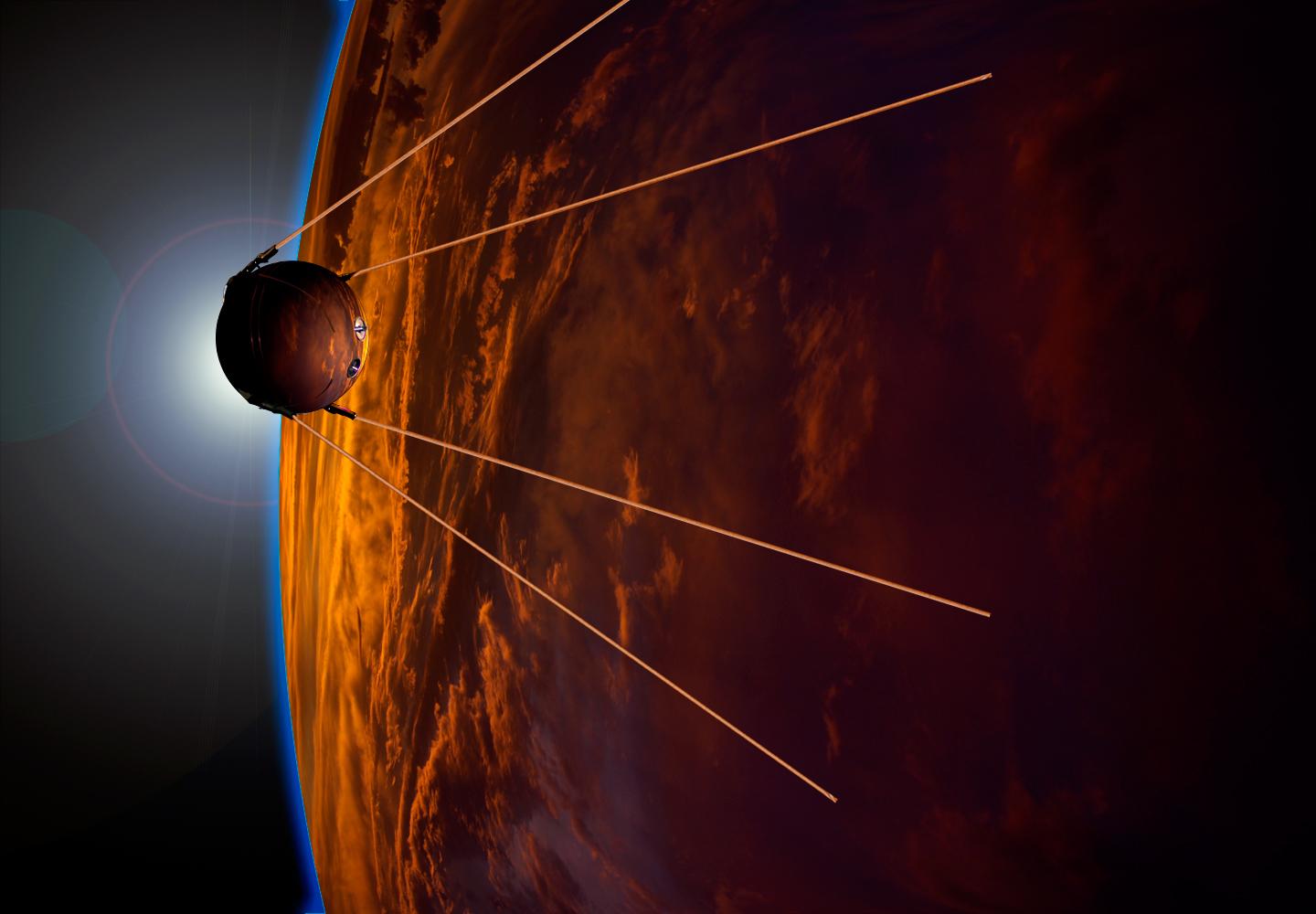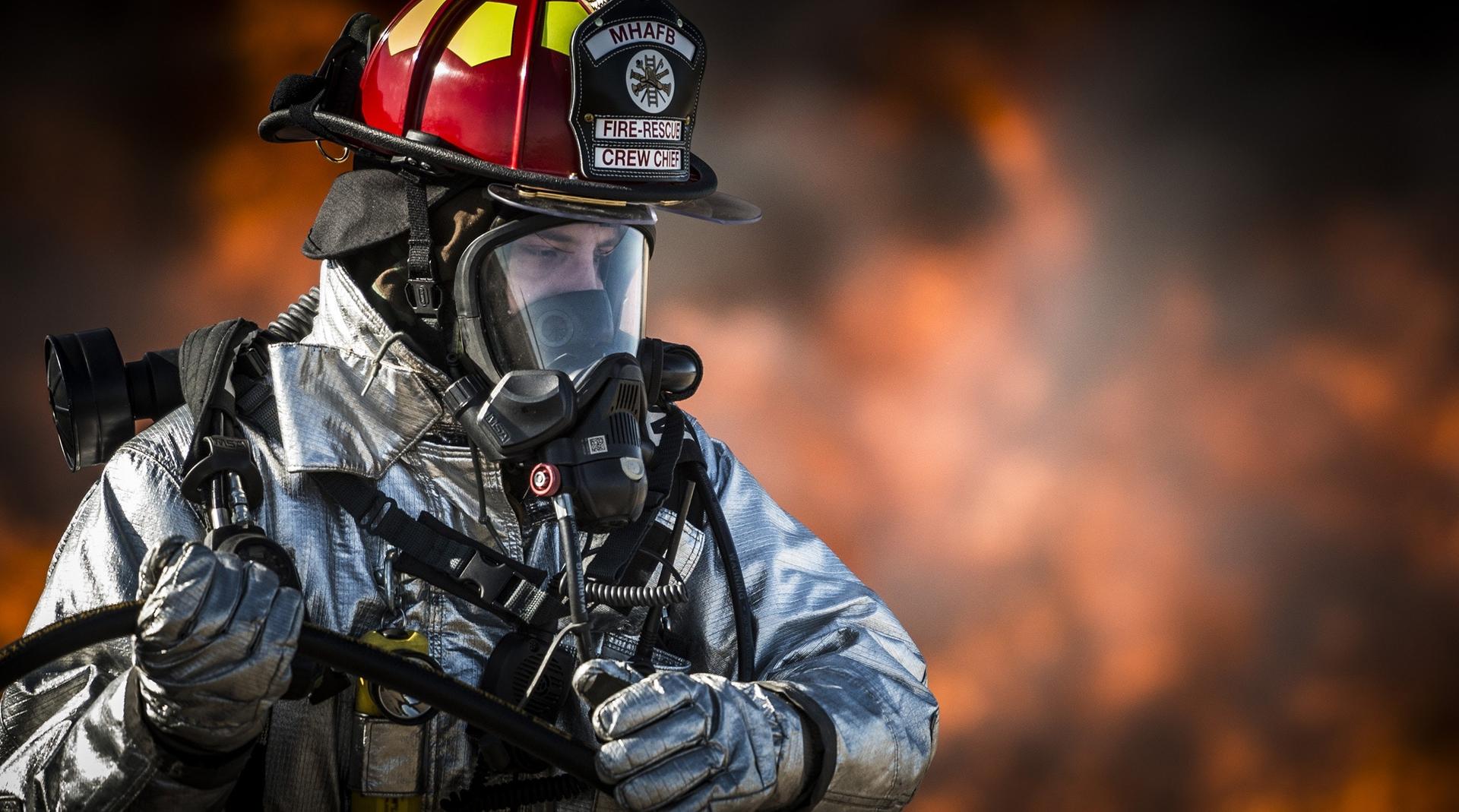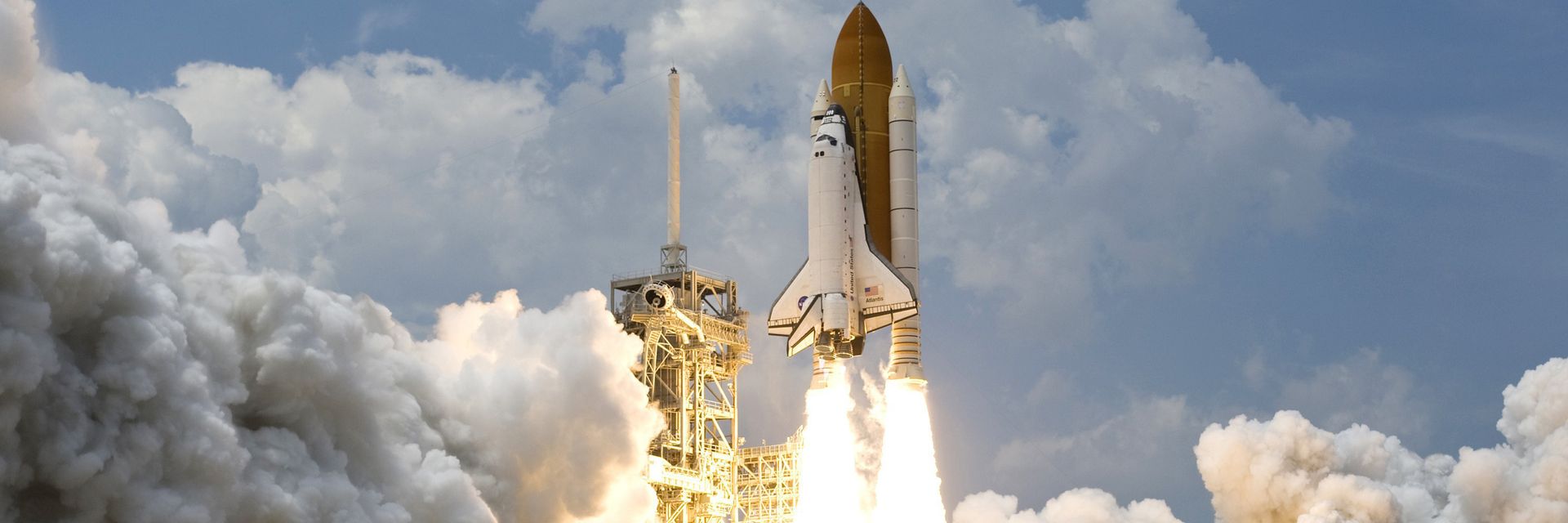Our advanced, tech-heavy world – satellite communications, advanced safety equipment – is unbelievably dependent on advances in technology made possible by NASA, the U.S. space agency.
◊
At the dawn of the U.S./Soviet “space race” not long after the end of World War II, people would have found it nearly impossible to predict the technological revolution that was to come. It would take writers of speculative science fiction even to come close to imagining the advances that were to arrive over a span of less than 50 years. Looking back in 1982, the Washington Post pointed out that the speculations of authors like Arthur C. Clarke about “the evolution of machine intelligence almost always have the inimitable ring of authenticity.” But even works of genius by Clarke, including Childhood’s End, vastly understated the technology of the future from his vantage in the mid-20th century.
Of course, Clarke and other sci-fi writers of that era predicted a future where communications were instantaneous and worldwide; where every home had an electronic connection to a central computer that could supply all the world’s information, tailored to the individual user; and where Earth was encircled by a fleet of communications satellites keeping people constantly updated about important issues and ideas.
But think about it . . . while all these amazing advances have become part of our everyday lives, we’re much further along in technological innovation than Clarke and others predicted. We’ve assimilated more high-tech marvels and have become more dependent on these innovations than ever before. And an almost inconceivable amount of this new tech in our lives has come to us through the work of NASA, the U.S. National Aeronautics and Space Administration, formed in 1958, at the dawn of the space race.
Let’s look at three of these inventions and innovations – GPS, online dating, and advanced firefighting equipment – to see how they have become omnipresent and essential foundations of our current lives. And let’s spend a moment wondering how our lives would be different if we woke up in 1958 and had to live with the tech of that time!
For more on NASA's monumental achievements and impactful innovations, check out the MagellanTV series A World without NASA.
1. A History of Global Positioning Satellites (GPS)

Artist’s conception of the Soviets’ Sputnik 1 satellite. (Source: Gregory R. Todd, via Wikimedia)
The First Satellites, Starting with the U.S.S.R., then the U.S.
The space race kicked into high gear in October 1957 when the Soviets launched Earth’s first artificial satellite into space. The launch of Sputnik into a low-Earth orbit shocked Americans who assumed that the U.S. had superior technology; the formation of NASA in the following year was a direct reaction to the Soviet’s achievement. The U.S. had to gain an advantage in satellite technology, but job no. 1 was to find a way to track Sputnik as it sped around the Earth.
To accomplish this, the U.S. used numerous tracking stations on Earth to keep precise tabs on the Soviet satellite. In anticipation of launching its own satellite, the U.S. had already set up a network called Minitrack, comprising scores of radio interferometer stations, arrayed worldwide, that could track foreign objects sailing through the sky.
Within two days of Sputnik’s launch, the Minitrack network had established the orbit of the satellite and its position in the sky at any given moment.
The Growth of Satellites in Space Inspires Space-Based Tracking on Earth
This earthbound approach was all the Americans had available to counter the Soviets’ success in space until early 1958, when the U.S. Explorer 1 satellite went into orbit. And that first step by the Americans inexorably led to a burgeoning roster of satellites, both orbiting and stationary, that was capable not only of sending and receiving data but of recording observations of Earth and the objects on it.
In the mid-1960s, the U.S. Navy began a program to supply up-to-the-minute information on the position of all the Navy’s nuclear-equipped submarines using positioning satellites. In the 1970s, the U.S. Department of Defense used this same idea to launch its NAVSTAR program, which sent up 24 satellites to transmit information to Earth that could be used to establish a stable navigation system.
This was the start of GPS, the Global Positioning System. Later, in 2000, GPS services were extended to the public so that commercial entities could create applications using GPS.
GPS works simply: Satellites in the sky receive a signal from your transmitter (e.g., your phone) and can pinpoint your location through triangulation using signals returned by several satellites. Not to worry, but some have warned that the system's simplicity makes it vulnerable to attack in the event of war.
What Would the World Be Like without GPS?
GPS is so ubiquitous and interwoven into the fabric of our culture that it’s hard to remember a time when we lived without it. But just imagine your world without the many advantages of the GPS system. Of course, let’s start with navigation services. It wasn’t that long ago that almost every automobile had at least one commercially printed map, if not several, tucked into its glove compartment to guide drivers from one point to another. Now, imagine how your mobile phone would function without GPS. (Hint: Not very well!) In fact, trying to use a mobile phone without GPS is analogous to trying to use a brick to make a quick call home. Smartphones give us instant-to-instant tracking of our location that the device uses for all communications.
And myriad smartphone applications rely on GPS too. From meal ordering to online dating, apps need to know where we are to offer the most accurate and timely services to users. Here are more services that rely on GPS to work:
- Air traffic control – we need to know where planes are to avoid crashes and keep planes on course.
- Emergency services – both police and ambulance services need pinpoint accuracy to know where to go, and the fastest means to get there.
- Logistics – from port operations to car manufacturers and supermarkets, GPS is essential to ensure that operators know where to obtain goods (food, parts, delivery containers) and where to deliver them.
- Land surveying – accuracy is necessary to avoid or settle land disputes.
- Time synchronization – mobile phone networks and banking and financial institutions require precise time to keep communications and billions of transactions on track.
This is only a partial list of the benefits of GPS technology. How would you respond to waking up in a world suddenly without GPS? For one, I’d never step on a plane again. I wouldn’t even be able to find the airport!
2. Online Dating Owes NASA Big

The original algorithm used by online dating pioneer Match.com resulted from advances in NASA’s advanced AI program for the space shuttle. (Source: cottonbro, via Pexels)
What’s the Connection between NASA and Online Dating?
It turns out there’s a lot of overlap between the automated, “intelligent” decision-making processes needed to perform complex tasks in dynamic environments like outer space and the decisions people make when using a dating app. Both require a somewhat intuitive strategy to answer questions in a manner most likely to get a successful outcome, whether that be a rapid solution to a fast-breaking mechanical problem or a harmonious dating encounter.
The interface that links these two seemingly incompatible endeavors is advanced artificial intelligence, and its first use by NASA was to help operate the Reaction Control System on its space shuttle Discovery in the early 1990s. The scientist who developed this for NASA is Dr. Michael Georgeff, and, once his work on Discovery was complete, he took his scientific innovation into the private sector to find commercial applications for this intelligent decision-maker.
Space-based Automated Decision-making Makes the Jump to Personal Relationship-building
Georgeff showed his technology first to a company called WeAttract.com. The founders of WeAttract wanted to improve how decisions get made, and results are displayed, in the online dating field. Georgeff applied his work for NASA to improve the matching algorithm, using a variety of questions to create “psychological profiles” not only of the person answering the dating questionnaire but of that person’s ideal match as well. That was the genius move to make dating apps more precise in offering possible matches. And, with this new dating algorithm, WeAttract changed its name to Match.com – and a new industry was on its way.
Match.com and its competitors enjoy combined annual revenue expected to top $2.8 billion in 2022. All this matchmaking has sprung from NASA’s need to have reliable decisions made in a timely fashion in space.
A 2019 study shows that nearly 40 percent of couples in the U.S. met through an online dating app. That percentage continues to climb.
What Would the World Be Like without Online Dating Algorithms?
The world would be a more solitary place, indeed, without the massive online dating industry turning singles into couples. Despite their drawbacks (creeps, liars, and psychos use these apps, as do the rest of us), millions of people log into these apps daily to check for potential matches. Without this, we’d be back in the Dark Ages of posting profiles without matching tools, with users just hoping that their photos and written self-descriptions might attract a nice potential date. And just think, without apps, people looking for a partner might even have to go out in public and meet a person face to face! What a concept!
3. Saving Firefighters’ Lives, So They Can Save Ours

A contemporary fireman wearing materials – including breathing apparatus – developed for NASA’s astronauts. (Source: Pexels/Pixabay)
Spurred on by Disaster, NASA Improves Fire-resistant Clothing and Equipment
The buildup and testing for Apollo 1, which would have been the U.S.’s first space flight with a crew of three, ended in a tragic fire that killed all its crew members in early 1967. In the quest to find reasons why, investigators turned up numerous shortcomings in safety preparations. Among the problems was that the fire spread rapidly in the airtight cabin, melting the astronauts’ suits and oxygen tubes. Immediate improvements were needed to many systems and procedures, and NASA went to work to find or develop replacement materials that would be less susceptible to flame.
In NASA’s search for lightweight, fire-retardant spacesuit materials and equipment, several commercially made fabrics were tested, including Gore-Tex and Kevlar, among others. They soon discovered the advantages of these materials: They were much lighter than previous fabrics, allowing for freer movement and more rapid response in situations needing quick, deliberate motion. Eventually, the polymer fabric called PBI was selected for its superior safety, and it was used in the fashioning of spacesuits as well as protective coatings for equipment.
NASA also developed a new type of breathing tool for astronauts called SCBA, for self-contained breathing apparatus. This significantly lightened the weight of the equipment while giving 50 percent more breathing time, increasing from 30 to 45 minutes.
SCBA is a similar system to the better-known SCUBA for underwater use. The primary difference is that SCBA works on demand, while SCUBA offers a continuous stream of breathable gas for divers underwater.
Fire Departments Utilize NASA Advances for Added Safety
In the 1980s, NASA collaborated with the U.S. Fire Administration (a FEMA agency) on Project FIRES (Firemen’s Integrated Response Equipment System) to test and promote new and better options for use in firefighting. The central element in this effort was a completely revamped firefighter’s uniform, with changes from head to toe, made of lightweight, fire-resistant, heat-protective materials originally developed for use in astronauts’ space suits. This set of clothing became the gold standard for protective gear for firefighters.
Regarding SCBA, commercial applications were made under contract with the Kennedy Space Center. Now, thanks to technology from the life-support systems used for the Apollo and space shuttle programs, firefighters could enter dangerous, life-threatening environments with much lighter, safer equipment that also allowed them to stay indoors for much longer than with previous gear.
What Would We Do without these Innovations?
Beyond the examples I’ve mentioned, there are scores upon scores of other NASA-derived technological advances that have been integrated into our daily lives. A very short list would include hardware miniaturization for mobile phones and smart credit cards, food safety, endangered animal identification, medical wearables, solar power, and advances in surgical techniques . . . all these and many more bear the invisible imprint of NASA-derived technological advances. Without them, our modern world would be a poorer, less secure, slower, and riskier place in which to live.
Ω
Kevin Martin is Senior Writer for MagellanTV. He writes on various topics, including outer space, the fine arts, and modern history. He has had a long career as a journalist and communications specialist with nonprofit and for-profit organizations. He resides in Glendale, California.
Title Image: NASA launches a rocket into space. (Source: Image by WikiImages from Pixabay)

